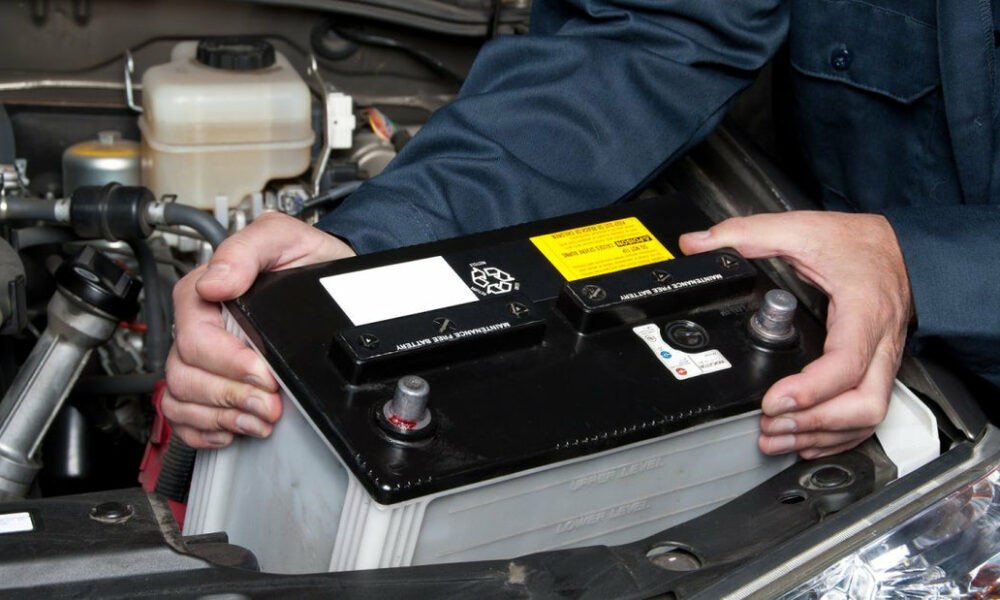AGV Future: Key Market Growth 2024

AGVs (Automated Guided Vehicles) are revolutionizing various industries with their efficiency and advanced automation capabilities. These vehicles, powered by batteries and navigating through magnetic strips, tracks, or lasers, are enhancing operational workflows across multiple sectors. Utilizing AGV lithium batteries further boosts their performance, providing longer runtime and faster charging. This article delves into the top four fastest-growing markets for AGVs: logistics, healthcare, automotive, and aviation, highlighting how these automated systems are transforming industry standards and boosting productivity.
AGV Future: Top Growing Markets
The AGV market is experiencing significant growth. Research and Markets predicts that by 2026, the global AGV market will reach $364 million, growing at a rate of 10.8% per year. AGVs (Automated Guided Vehicles) are automated vehicles that use batteries for power and navigate using magnetic strips, tracks, or lasers. They are equipped with safety features and auxiliary systems like transfer and assembly mechanisms.
AGVs are widely applicable, and here are the four fastest-growing markets:
Logistics:
In logistics, AGVs are becoming increasingly important. Efficient logistics operations are essential for business competitiveness. AGVs and AMRs (Autonomous Mobile Robots) help transform the logistics chain, making it more efficient. Modern AGVs are equipped with advanced sensors and artificial intelligence, allowing them to perform tasks such as moving goods, preparing orders, and managing inventory.
E-commerce has significantly benefited from AGVs. As online shopping grows, quick and efficient order processing is crucial, with 24-hour delivery becoming the norm. Warehouses close to cities are vital but expensive. To optimize space, many logistics companies use high-rise storage solutions. Here, compact and powerful AGV robots are invaluable. They can move vertically and handle heavy loads, maximizing storage space and reducing labor costs.
Healthcare:
In healthcare, AGVs play a significant role. They transport food, clothing, and waste, deliver medications to patients, and move heavy items. During the COVID-19 pandemic, hospitals around the world faced staff shortages, and AGV robots were highly beneficial. For example, in Italy, robots organized patient health information, and in Marseille, disinfectant-equipped AGVs were used by the Navy Fire Department.
Even before the pandemic, healthcare facilities used AGVs. Since 2012, Nantes University Hospital has used collaborative robots to transport about 50 flexible endoscopes daily between the ICU, endoscopy department, and operating rooms. These robots travel autonomously, covering approximately 1,400 kilometers annually and transporting over 25,000 endoscopes. The hospital values the high-security level provided by the AGVs with locked cabinets. These machines must be network-connected for remote maintenance and offer IP protection, as they frequently encounter disinfectants.
Automotive Industry:
The automotive industry has been using AGVs since the 1950s, and it remains a growth area. At Audi’s plant in Bavaria, traditional assembly lines have been replaced with workstations managed by a few operators. AGVs transport vehicle parts between stations, following optimal routes chosen by algorithms. This system syncs with a control room that analyzes all production data, boosting productivity.
In car manufacturing, push robots, shelf pullers, automatic lifts, and other smart mobile systems are common. These systems, equipped with sensors, cameras, radar, and lasers, ease workers’ tasks. PSA Peugeot Citroën also uses AGVs to save time and space in production. AGVs integrate perfectly into lean manufacturing systems, loading in logistics areas and returning to assembly lines for tasks like engine assembly.
Track AGVs have also developed recently, sliding under carts and using hooks to move them. This innovation helps in narrow spaces, optimizing the movement of AGVs and carts.
Aviation Industry:
The aviation industry is modernizing with AGVs to boost competitiveness and handle increased production. Airbus has introduced a highly automated assembly line for A320, A321, and A321R fuselage structures. AGVs transport heavy fuselage parts and are part of more innovative projects.
To enhance efficiency and avoid health risks for technicians, Actemium, part of Vinci Energies, developed a solution for automated inspection of aircraft engine assemblies. This robot, mounted on an AGV, compares digital reference models with completed assemblies.
In maintenance, AGVs are useful for identifying faults. Thalès DMS in France uses AGVs to autonomously move under aircraft, emitting electromagnetic waves. This helps mechanics check cabin parameters and analyze sensor damage for maintenance planning.
For design, BA Systems Group developed Asimov, a collaborative robot that performs assembly operations within aircraft structures. Designed for the Airbus A380, it positions itself accurately to print parts and reference forms for operators.
In conclusion, the AGV market is rapidly growing in various sectors, driven by their efficiency, flexibility, and ability to meet modern industry demands.
AGV Future: Benefits of Lithium Ion Batteries for AGVs
Using lithium ion batteries with AGVs boosts efficiency and productivity. Lithium ion batteries charge in 1-2 hours, support opportunity charging, and require less maintenance than lead-acid batteries. With an energy density of 90-120 Wh/kg, they maintain high voltage throughout use, unlike lead-acid batteries (30-50 Wh/kg). Examples include Audi’s modular assembly system and Airbus’s automated assembly line, where AGVs transport heavy parts efficiently. Looking for reliable AGV power solutions? MANLY Battery offers high-quality lithium batteries at competitive prices. Don’t hesitate, contact us now!
Conclusion
The AGV market is expanding rapidly across multiple sectors, driven by the need for efficiency, flexibility, and technological advancements. Industries like logistics, healthcare, automotive, and aviation are integrating AGVs to optimize operations, reduce costs, and improve productivity. As businesses continue to adopt AGVs, the demand for reliable and efficient lithium ion batteries will grow, ensuring these automated systems operate at peak performance.





